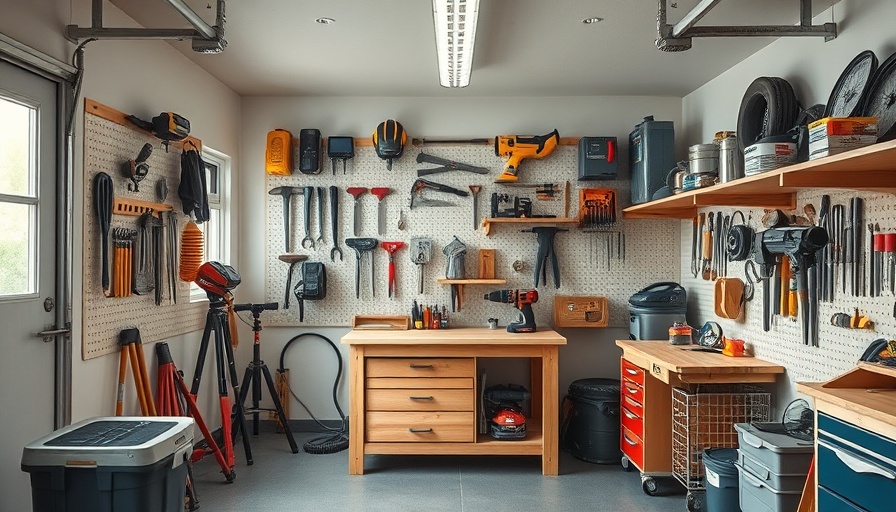
Boosting Efficiency in Your Garage Workshop
Transforming your garage into a functional workshop requires more than just a desire to build; it calls for strategic planning and effective organization. This guide offers a mixture of innovative techniques and essential tips for creating a garage workshop that is not only efficient but also safe and inspirational.
Understanding Your Workshop Space
The first step in revamping your garage workshop is to assess your available space thoroughly. Take careful measurements of your garage, noting dimensions, ceiling height, and any obstructions that could affect your layout. This assessment lays the groundwork for an effective design.
Consider what you'll be working on frequently—be it woodworking, automotive maintenance, or general DIY projects. Each task may require different tools and space, highlighting the importance of establishing distinct task zones within your workshop that cater to varied activities.
The Importance of Workflow Design
Creating a functional workflow is essential for any garage workshop. Begin by segmenting your space into specific zones, ensuring tools related to each task are easy to access. For example, keep woodworking tools near the woodworking zone, and maintain storage for automotive supplies next to your mechanics area.
Optimizing your workstation layout can significantly improve productivity. Positioning your workbench centrally allows you to reach for tools without excessive movement, minimizing downtime during projects. Additionally, ensure that pathways remain clear to facilitate safe and efficient movement around the workshop.
Illuminating Your Workspace
A well-lit workshop enhances visibility and reduces strain during intricate tasks. Utilize natural light through windows during the day, but don't rely solely on it. Install overhead LED lights to create a bright and inviting atmosphere, complemented by task lighting directly above work areas for detailed projects. This layered lighting approach not only improves usability but makes the workshop a more pleasant place to work.
Investing in Essential Tools
Equipping your garage workshop with the right tools is vital for tackling projects efficiently. An array of essential hand tools like hammers, screwdrivers, and measuring tools provides a solid foundation. Pair these with key power tools including a cordless drill and circular saw to enhance versatility. Remember, the right tool for the right job can save both time and frustration.
Garages and Climate Control
Do not overlook the significance of your garage door in workshop efficiency. Insulating your garage door helps regulate temperature, saves energy, and minimizes noise, creating a more attractive and usable environment. Selecting a quality garage door opener can improve accessibility and convenience, allowing for smoother transitions between projects.
Organizing Your Space
To maximize efficiency, organization is key. Implement shelving systems, pegboards, and locked cabinets to store tools and materials neatly. Clearly labeling these storage solutions ensures that everything has a designated place, reducing time spent searching for tools and fostering a clean workspace.
Practical Steps for Improvement
As you proceed with your garage workshop project, remain adaptable. Check in on your original plans and budget, making adjustments to ensure your workshop remains functional as needs evolve. Regular organization sessions can help maintain efficiency, keeping clutter at bay and ensuring the workspace serves its purpose effectively.
In conclusion, whether you are a DIY enthusiast or a budding mechanic, setting up a garage workshop that meets your creative needs involves careful planning. By optimizing space, designing for workflow, investing in the right tools, and ensuring proper organization, you can create an inspiring environment that makes every project more enjoyable.
 Add Row
Add Row  Add
Add 


Write A Comment